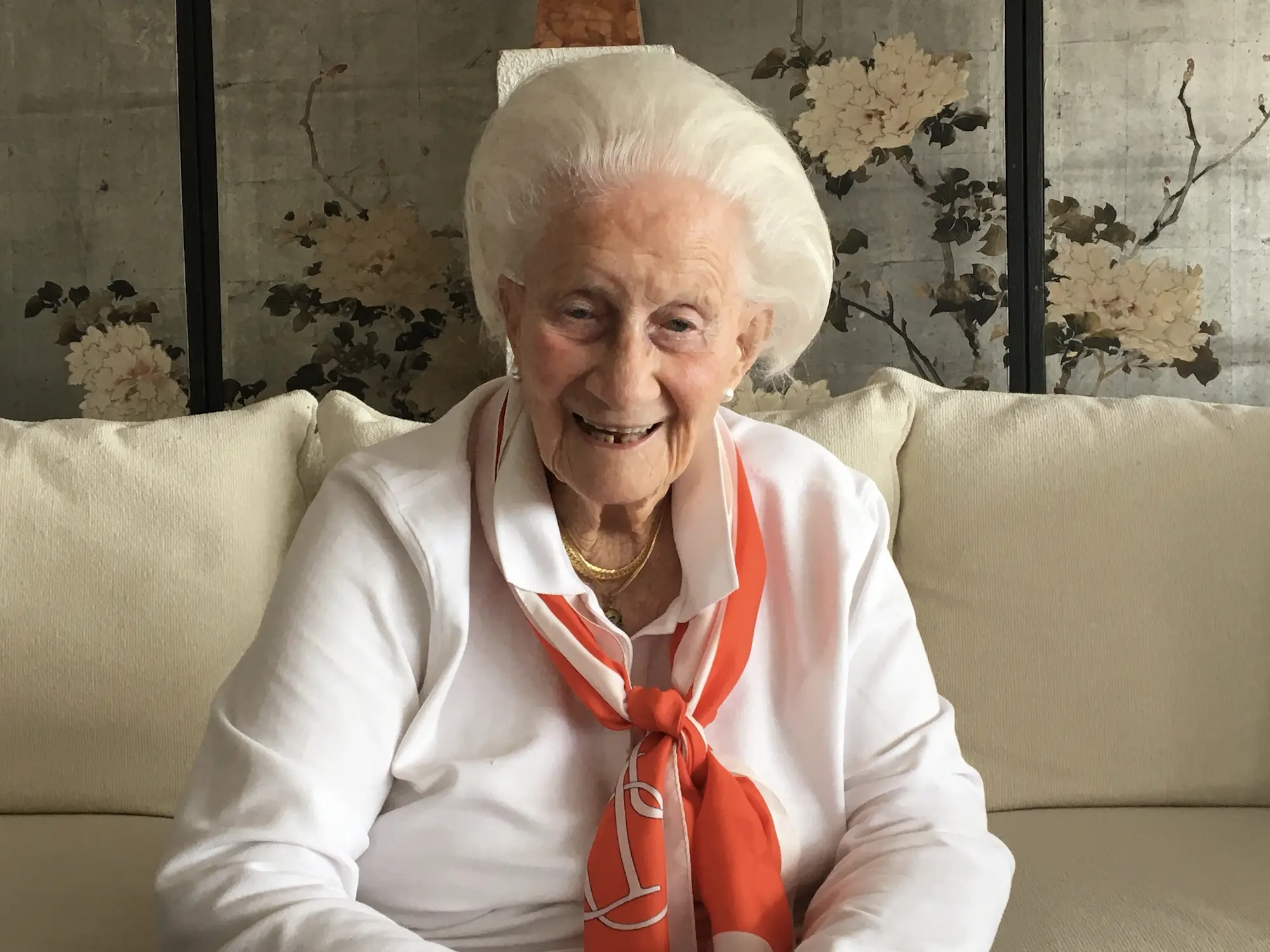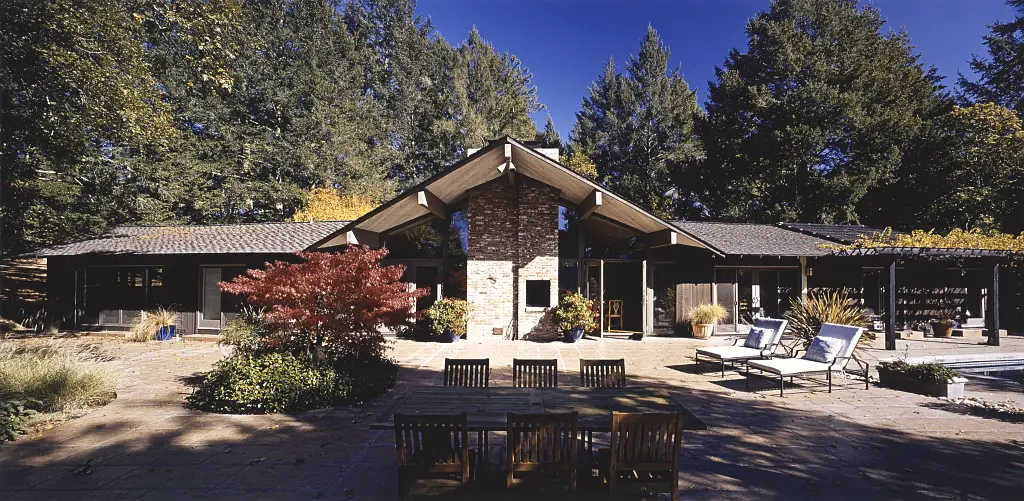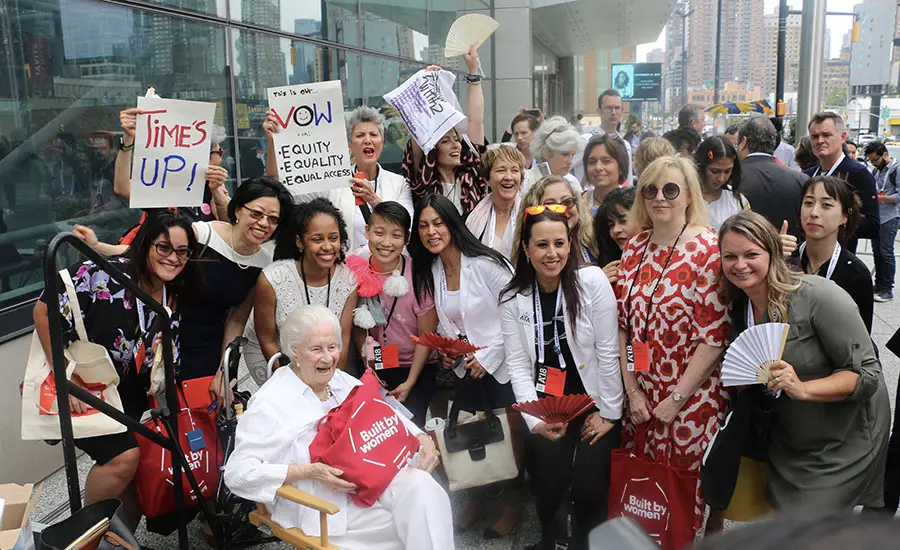Beverly Willis, FAIA, who at age 74 launched a foundation dedicated to documenting women’s contributions to architecture and later to improving conditions for women architects, died on Sunday, October 1 at her home in Branford, Connecticut. She was 95.
An artist, architect, and activist, she created the Beverly Willis Architecture Foundation (BWAF) in New York in 2002. “Its initial purpose was to get women architects into the history books,” Willis told RECORD in 2021. Early on, the foundation sponsored research into the work of Marion Mahony Griffin, Natalie de Blois and other women who were too often overlooked by architectural historians. It gradually expanded its mission to include improving the visibility and influence of women working not only in architecture but in related fields. Willis directed several short films about women architects, including one on the female disciples of Frank Lloyd Wright, A Girl Is a Fellow Here.
She also became something of a star in New York in recent years, picking up awards from organizations like the New York chapter of the AIA, which honored her in 2018, and presiding over the BWAF’s annual galas. Jill Lerner, a principal at Kohn Pedersen Fox and a BWAF board member, described Willis as “a dynamo who persevered for many years, not just fighting but succeeding in shedding light on the challenge women face in advancing to the highest levels of the profession and getting recognition for it. She was a tireless promoter of the cause.”

Beverly Willis pictured at her home in Branford, Connecticut, in 2020. Photo courtesy Beverly Willis Foundation
“I always admired Beverly’s commitment to ensuring that women architects were treated equitably, receiving the recognition that was often denied to them," Annabelle Selldorf, founding principal of Selldorf Architects, told RECORD. "In particular her decision to foreground the contributions of early female practitioners has provided new role models for future generations. I was honored to be among the contemporary architects that she felt worthy of championing.”
Born in Tulsa, Oklahoma in 1928, Willis spent part of the Depression in an orphanage, although her parents were alive. “I was told it was so I would have enough to eat,” she said. During World War II, Willis learned wiring and welding; after the war, she enrolled at USC, where there were so few women, she recalled, that she “had dates for breakfast, lunch, and dinner.” She transferred to the University of Oregon to study engineering, then moved to San Francisco and became a painter. When people told her that her work seemed somehow Asian, she moved to Hawaii to explore that connection. She completed her bachelor’s degree at the University of Hawaii, studied fresco painting under Jean Charlot, and began painting murals for houses and hotels. That led to interior design commissions, for which she sometimes hired architects. When one, bristling at her criticism, said, “If you’re so smart, why don’t you become an architect?” she decided that she would.
In 1958 she opened an office in San Francisco that took on everything from products to interiors to buildings. Not yet an architect, Willis turned to real estate development, becoming her own client. She created the Union Street Shops (1964) out of several abandoned buildings. Though she had never been to architecture school, in 1966 she won the right to take the state licensing exam, based on her years of work experience. (It helped that her old friend Senator Daniel Inouye of Hawaii called California Governor Pat Brown on her behalf.)

The Abbott and Roxana Robertson country house in St. Helena, California. Completed in 1960, the home was the first realized design of Willis as an architect. Photo via Beverly Willis Architectural Photograph Collection, Library of Congress
“I’ve been involved in a lot of firsts,” she said, citing her early forays into adaptive reuse and her firm’s development, in 1971, of software for town planning, known as Computerized Approach to Residential Land Analysis, or CARLA. Among her noteworthy buildings is the 1984 home of the San Francisco Ballet, “a classically-inflected modernist addition to the civic center precinct,” according to Bay Area writer and editor John Parman. “Motivated by her love of ballet and her friendship with the company’s principals, Willis took great pains to meet their specific and exacting needs—no small achievement in a project with all of the usual budgetary constraints,” Parman observed.
In the 1970s, she worked to get the national AIA to support the Equal Rights Amendment, and she became a founding trustee of the National Building Museum. Around the same time, she was outed by a gay group, which, because many powerful San Franciscans then were conservative Republicans, “caused big problems for my practice,” she said in the 2021 interview. For a time, she lived quietly in the Napa Valley. Then, in 1988, during a recession, she decided to take a two-year sabbatical. She ended up settling in New York City, attracted by its rich architectural offerings.
But she was dismayed by what she saw as the efforts of Philip Johnson and his “male acolytes to keep women out of the profession, and women who did make it into the profession from being recognized even when they were dead,” she said.

A flashmob organized by Willis at the 2018 AIA conference in New York City. Photo © Architectural Record
So, in 2002, Willis founded and funded the BWAF. Its first executive director was Wanda Bubriski, an architectural historian who was also Willis’s life partner. (The organization is now run by architect Cynthia Kracauer.) Willis gave up her voting membership on the foundation’s board, she said in 2021, in part “to make myself unimportant to the organization.” But she remained an activist: during the 2018 AIA convention in New York, she helped organize a flashmob billed as “a collective call to action” against discrimination.
Reflecting on the foundation’s accomplishments, Willis said it had updated the historic record of women in architecture; changed the culture of the building industry for women; and sponsored research leading to the adoption by the AIA of changes to its code of ethics pertaining to sexual harassment.
In the 1950s, she recalled, “Everywhere I went I was the only woman in the room. Now the room has lots of women. It’s been an amazing journey.”




Post a comment to this article
Report Abusive Comment